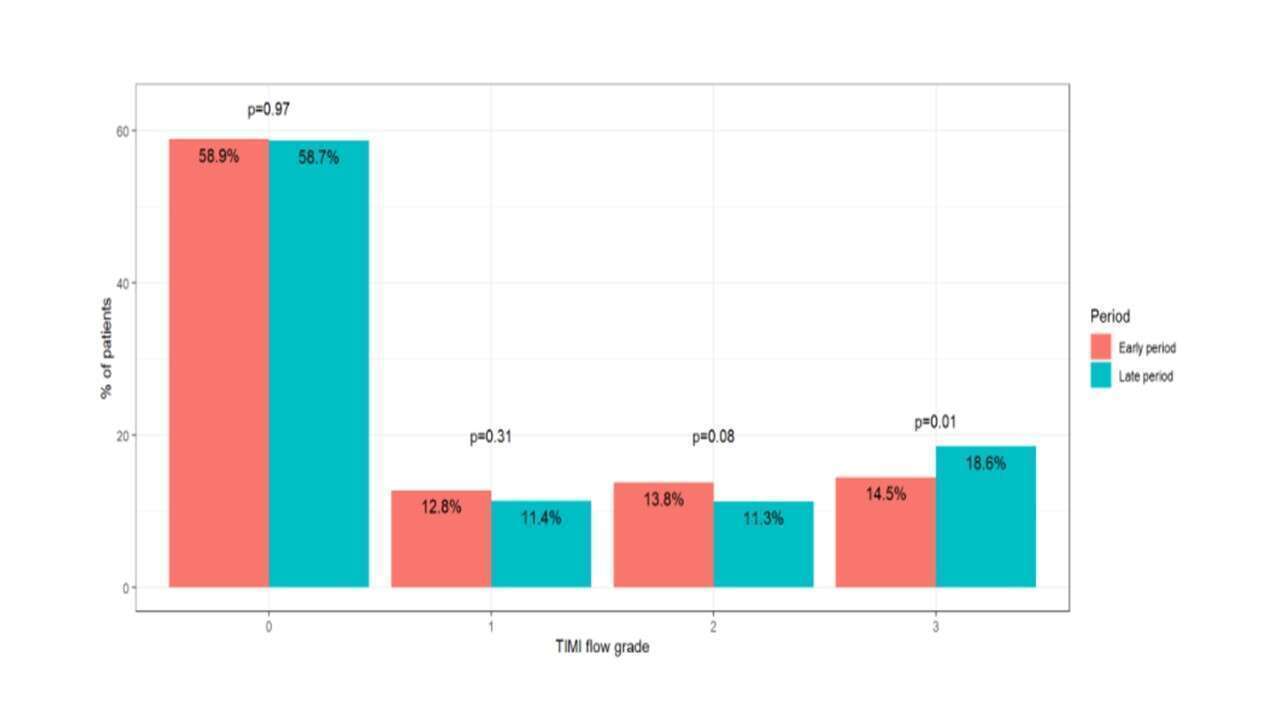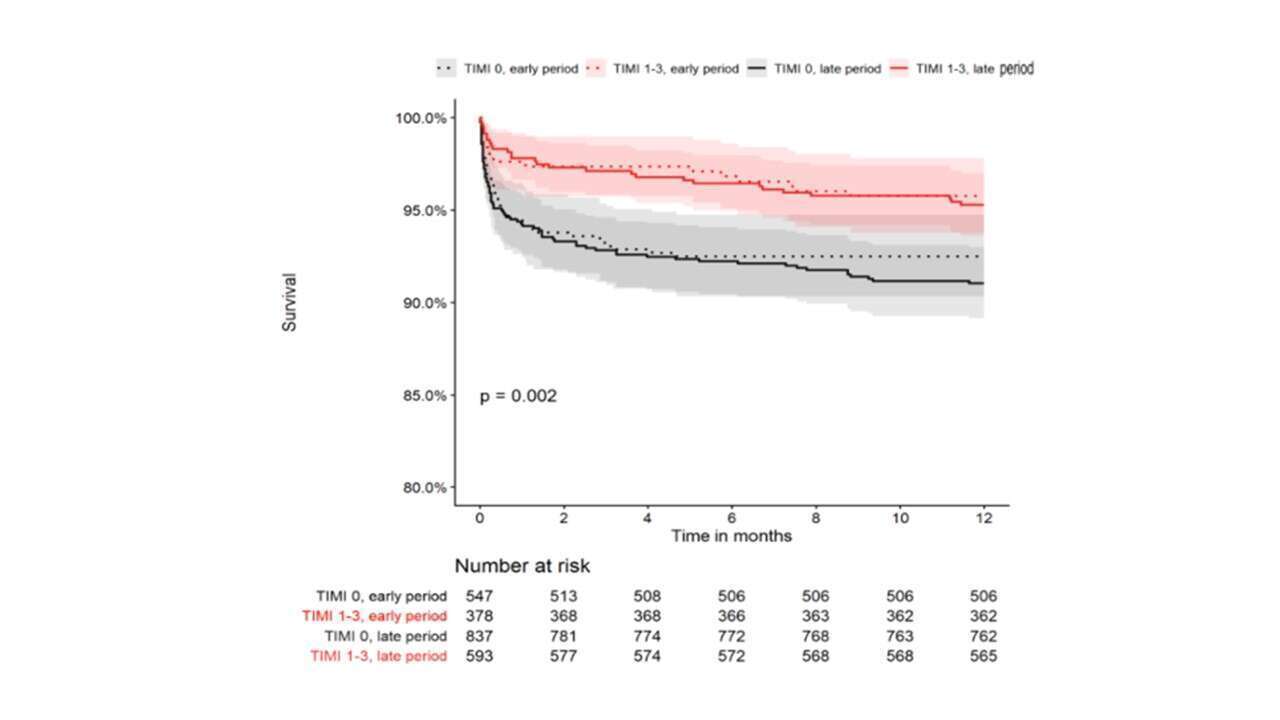
Temporal Trends in the pre-procedural TIMI flow grade among patients with ST- segment Elevation Myocardial Infarction – from the ACSIS Registry
2Israeli Center of Cardiovascular Research, Tel Hashomer, Israel
3The Heart Center, Chaim Sheba Medical Center, Tel Hashomer, Israel
4Internal Medicine A, Meir Medical Center, Israel
5Cardiology, Bnai Zion Medical Center, Israel
6Cardiology, Wolfson Medical Center, Israel
7Cardiology, Hilel Yaffe Medical Center, Israel
Introduction
Pre-procedural TIMI coronary flow grade in patients with ST segment elevation myocardial infarction (STEMI) is associated with adverse clinical outcomes. There have been great advances in pharmacologic and invasive treatment of STEMI patients in the current era. We aimed to assess the temporal trends in clinical outcomes according to the TIMI flow grade amongst these patients.
Materials and Methods
Data of patients with STEMI from the acute coronary syndrome Israeli Survey (ACSIS) registry. A time-dependent analysis stratifying patient by TIMI flow grade 0 and TIMI flow grade 1-3 was performed. Survey years were divided to early (2008–2010) and late period (2013-2018). Clinical outcomes included in-hospital complications, 30d MACE (death, myocardial infarction, stroke, unstable angina, stent thrombosis, urgent revascularization) and 1-year mortality.
Results and Discussion
Included were 2453 patients. The majority of patients had pre-procedural TIMI flow 0 (58.9% in the early period and 58.7% in the late period, P=0.97). In-hospital complications of patients with TIMI flow 0 has significantly decreased over time (36.1% vs 26.8%, P<0.001) but not amongst patients with TIMI flow 1-3. Compared with TIMI flow 1-3, patients with TIMI flow 0 had worse 30d MACE and 1-year mortality. There was no temporal change of these outcomes in either TIMI flow grade group.
Conclusion
Preprocedural TIMI flow grade is still of prognostic significance in the current era. Patients with TIMI 0 have a poorer prognosis than their counterparts with TIMI 1-3. While in-hospital complications have decreased among patients with TIMI 0 over time, their 30-d MACE and 1-year mortality remained unchanged.

Powered by Eventact EMS